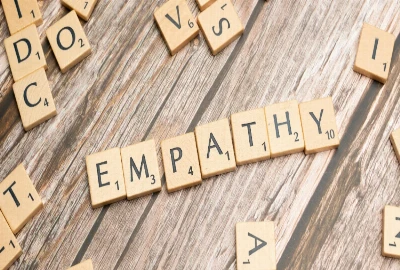The App Knows You’re Sad: Emotional AI and the Future of Mental Health

Understanding Emotional AI
Emotional AI—also known as affective computing—is a branch of artificial intelligence designed to detect, interpret, and respond to human emotions. By analyzing data such as voice tone, facial expressions, heart rate, and even typing patterns, emotional AI can identify subtle cues about a person’s mood. In the world of mental health technology, this innovation is revolutionary. Imagine an app that can tell when you’re anxious before you can, or a voice assistant that senses sadness in your tone and asks if you’d like to talk.
From Mood Tracking to Emotional Prediction
Unlike traditional mood trackers, which rely on manual input, emotional AI operates passively—observing and learning from your digital behavior. It doesn’t just record emotions; it anticipates them. For instance, if your voice slows, your messages shorten, and your sleep tracker shows restlessness, the system may detect signs of depression or burnout. These insights can prompt early intervention, potentially preventing crises before they escalate.
The Human-Tech Hybrid Era
This merging of emotion and algorithm signals a new era: one where technology doesn’t just respond to commands but to feelings. Emotional AI aims to make devices more compassionate, intuitive, and helpful. But as machines learn to read human emotion, a new question arises—what happens when your phone knows you better than your therapist?
How Emotional AI Detects What You Feel

Data as Emotional Footprint
Every digital action leaves a trace of emotion. Emotional AI tools analyze various signals—facial microexpressions captured through cameras, linguistic tone in text messages, biometric data from wearables, and even typing rhythms—to infer psychological states. For example, AI algorithms trained on thousands of voice samples can distinguish stress, joy, or fatigue with surprising accuracy.
Natural Language Processing and Emotion Recognition
Natural Language Processing (NLP), a core component of emotional AI, allows apps to interpret not just what you say, but how you say it. Sentiment analysis can detect subtle indicators of frustration, hopelessness, or anxiety in written text. Chatbots like Woebot and Wysa already use this approach to deliver personalized mental health support.
The Evolution of Emotionally Intelligent Machines
As machine learning models train on diverse emotional datasets, they continuously improve their understanding of context. This means emotional AI can detect not just sadness, but its intensity, its pattern, and its possible triggers. The future promises even more precision—AI that can integrate multiple data streams to paint a holistic picture of your emotional wellbeing.
But as this capability grows, so do concerns: how much emotional transparency is too much, and who controls this deeply personal data?
The Promise of Emotional AI in Mental Health Care

Early Detection and Intervention
One of emotional AI’s most promising applications is its ability to detect mental health issues early. By recognizing behavioral changes that indicate anxiety, depression, or stress, AI-driven systems can alert users—or healthcare providers—to potential concerns before symptoms worsen. This proactive approach could revolutionize preventive mental health care, especially for those without easy access to therapy.
Personalized Emotional Support
Unlike traditional therapy apps that rely on preset responses, emotionally aware systems tailor support based on individual needs. If a user’s speech pattern signals fatigue or sadness, an app might recommend a guided meditation, send a gentle reminder for a walk, or even suggest reaching out to a friend. This personalization enhances emotional connection and engagement, making technology feel more human.
Bridging Gaps in Access and Affordability
Mental health care remains inaccessible for many due to cost, stigma, or geography. Emotional AI offers an affordable, scalable alternative—delivering emotional check-ins and mood insights directly through smartphones or wearables. While it can’t replace therapy, it can complement it, offering real-time emotional support between sessions.
However, the question remains: can a machine truly understand human suffering, or does it merely recognize patterns?
The Ethical Dilemma: When Privacy Meets Emotional Surveillance

The Cost of Emotional Transparency
Emotional AI’s power lies in its ability to sense and interpret intimate emotions—but this intimacy comes at a cost. Every analyzed voice clip, facial image, and biometric signal is data that can be stored, sold, or misused. In essence, emotional AI creates a new form of emotional surveillance—where our moods become measurable commodities.
Corporate Control of Emotional Data
Companies that develop emotional AI systems often use user data to train their algorithms. This means our emotions feed a vast data economy, where sadness, stress, or joy can influence targeted advertising and engagement strategies. For instance, if an app detects you’re anxious, it might show calming product ads or promote wellness subscriptions. The line between care and capitalism becomes dangerously thin.
The Psychological Impact of Being Watched
Knowing that your emotions are constantly being monitored can itself cause emotional strain. Users may begin to self-censor, performing happiness for their devices or distrusting their own emotional readings. This subtle pressure to “feel correctly” creates a new form of digital anxiety—one rooted in algorithmic judgment.
The ethical future of emotional AI depends on transparent data policies, informed consent, and strict regulation. Without these safeguards, emotional surveillance risks turning empathy into exploitation.
The Illusion of Empathy: Can Machines Truly Care?

The Simulation of Understanding
At the heart of emotional AI lies an existential tension: machines can recognize emotion, but they cannot feel it. When a chatbot says, “I’m sorry you’re upset,” it doesn’t empathize—it predicts that this phrase will comfort you. Emotional AI mimics empathy through statistical probability, not shared experience.
Emotional Substitution and Human Disconnection
While emotionally intelligent systems can provide immediate comfort, overreliance on them may erode genuine human connection. If people begin turning to AI for emotional support more than to friends or family, the depth and resilience of real relationships could suffer. Technology may offer understanding, but not intimacy.
When Empathy Becomes Interface Design
Emotional AI is built to perform empathy—to appear compassionate, responsive, and kind. This design is effective for engagement but can blur the boundary between genuine care and algorithmic manipulation. For users, the emotional authenticity of an app can feel real even when it’s entirely synthetic—a phenomenon that challenges our definition of empathy itself.
To preserve humanity in the age of AI-driven emotions, we must see emotional technology as a tool, not a replacement for real connection.
Building a Future of Responsible Emotional AI

Human-Centered Emotional Technology
The next step for emotional AI isn’t greater precision—it’s greater purpose. Developers, therapists, and ethicists must collaborate to create systems that enhance human wellbeing without exploiting vulnerability. This means building emotional AI that’s transparent, consent-based, and grounded in psychological science.
Digital Emotional Literacy for Users
Users also play a crucial role in shaping the ethical use of emotional AI. Understanding how these systems work—and where their boundaries lie—is essential. Practicing digital emotional literacy helps individuals recognize when to trust technology’s emotional insights and when to rely on human empathy.
Balancing Innovation with Integrity
The challenge isn’t to stop emotional AI, but to guide it responsibly. Policies must ensure emotional data remains private, non-commercialized, and used solely for wellbeing. Ethical innovation means creating systems that help humans feel more—not less—connected, authentic, and understood.




